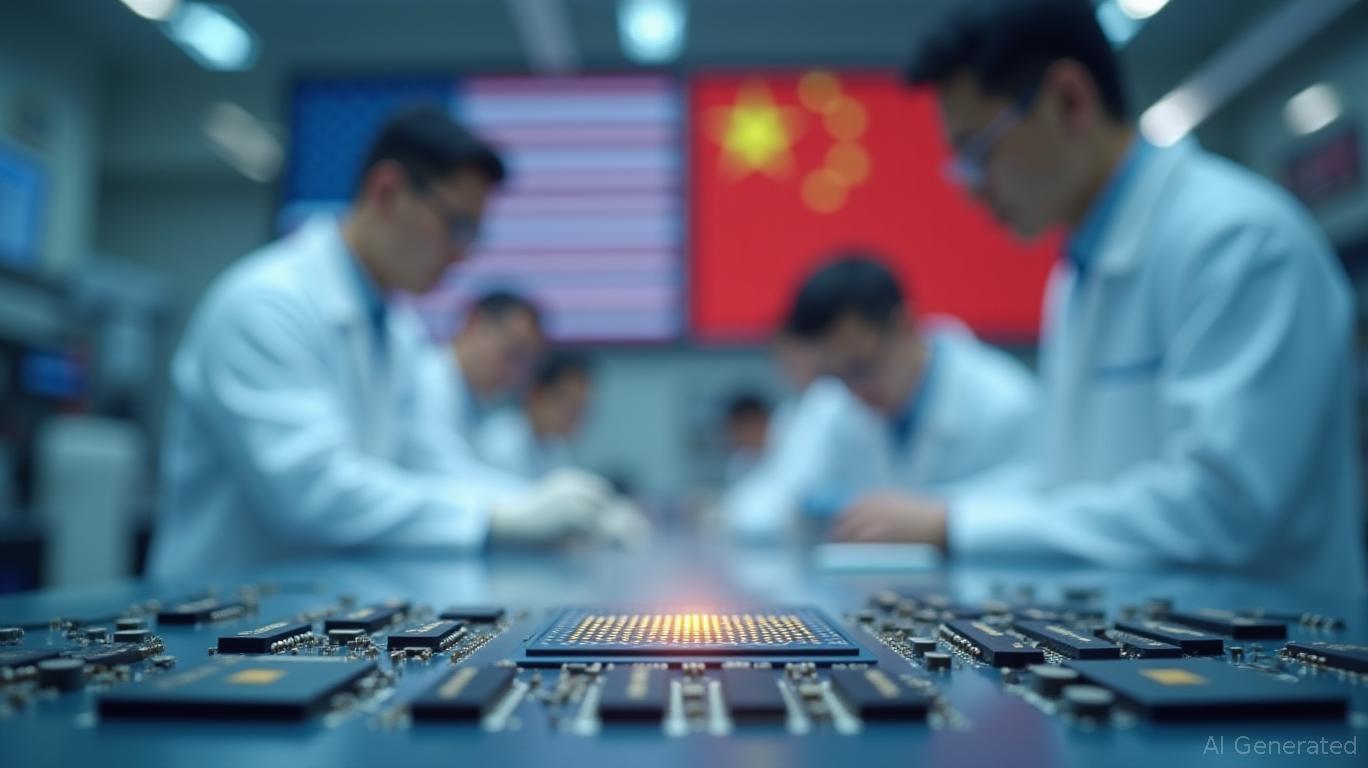The Semiconductor Divide: Navigating Geopolitical Crosscurrents for Tech Dominance
The U.S.-China tech rivalry has reached a boiling point, with semiconductor supply chains at the epicenter of a global decoupling. Escalating tariffs, export controls, and the U.S. CHIPS Act are reshaping the industry's landscape, creating asymmetric opportunities for investors. While geopolitical risks loom, strategic bets on companies with resilience and innovation dominance—like Taiwan Semiconductor Manufacturing Company (TSMC) and AI-driven breakthroughs like DeepSeek—could yield outsized returns. Here's how to navigate this divide.
Geopolitical Drivers Reshaping Semiconductors
The U.S. has weaponized its semiconductor prowess, leveraging the CHIPS Act ($52.7 billion in funding) and BIS export controls to curb China's access to advanced chip technologies. The May 2025 BIS updates, for instance, tightened licensing requirements for AI-linked semiconductors and expanded the Entity List targeting Chinese entities. Meanwhile, China is doubling down on self-reliance, pouring subsidies into domestic chipmakers like SMIC and ramping up R&D to close its node gap.

The U.S.-China trade war has also introduced asymmetrical tariff pressures. While the U.S. exempts
from retaliatory tariffs for its U.S. investments, China has retaliated by restricting exports of critical materials like quartz and polysilicon. This creates a “friend-or-foe” dynamic, favoring firms with geopolitical alignment and diversified supply chains.Investment Opportunities: Bet on Resilience and R&D Dominance
- U.S. Manufacturers: CHIPS Act Beneficiaries
Companies like Intel ($INTC) and Micron ($MU) are prime beneficiaries of the CHIPS Act's grants and loans. Intel's $3B “Secure Enclave” program, for instance, aims to secure advanced node production domestically, reducing reliance on TSMC. Advanced packaging (e.g., 3D ICs) and legacy-node chips—prioritized under the CHIPS Act—will also drive demand for U.S. firms.
- Taiwan's Tech Leaders: The Unassailable Foundry
TSMC ($TSM) remains the gold standard for advanced node fabrication (3nm, 2nm). Its tariff exemptions under the CHIPS Act and U.S. factories (e.g., Arizona) insulate it from U.S.-China trade volatility. TSMC's dominance in heterogeneous architectures (e.g., CoWoS for AI chips) aligns with the $150B gen AI semiconductor market projected for 2025.
- AI-Driven Innovation: DeepSeek's Semiconductor Demand Surge
DeepSeek's breakthrough in large-scale AI models underscores the GPU crunch for generative AI. U.S. GPU leaders like NVIDIA ($NVDA) and AMD ($AMD)—which rely on TSMC for advanced nodes—will see soaring demand. Even fabless firms like Qualcomm ($QCOM), despite China exposure, benefit from AI chip upgrades in smartphones and IoT.
Risks: Avoid China-Reliant Plays
The flip side of this divide is the fragility of China-facing businesses. Companies overly dependent on the domestic Chinese market—like SMIC (688981.CN) or Huawei-linked suppliers—face existential risks. Beijing's subsidies can't offset U.S. export controls, and its “self-reliance” push remains years behind in advanced nodes.
Investors should also heed supply chain fragmentation risks. While the CHIPS Act aims to onshore production, fragmented supply chains could raise costs and limit economies of scale. Companies like ASML ($ASML)—critical for EUV lithography—benefit from both U.S. and Taiwanese demand but face geopolitical headwinds.
Case Studies: TSMC and DeepSeek's Strategic Play
- TSMC's Geopolitical Playbook: By securing U.S. tariff exemptions and deepening ties with AI innovators (e.g., DeepSeek), TSMC is future-proofing its revenue. Its Arizona factories, backed by CHIPS Act funds, will ensure access to the U.S. market while insulating it from trade wars.
- DeepSeek's AI-Driven Semiconductor Demand: DeepSeek's models require massive compute power, driving demand for advanced GPUs and memory chips. This creates a virtuous cycle: U.S. chipmakers like profit, while TSMC's foundries expand.
Conclusion: Strategic Bets for the Decoupling Era
The semiconductor sector is bifurcating into winners and losers. Investors should prioritize:
1. U.S. firms with CHIPS Act funding and R&D strength (Intel, Micron).
2. Taiwan's tech leaders (TSMC, ASML) with unmatched fabrication capabilities.
3. AI-driven hardware plays (NVIDIA, AMD) benefiting from gen AI's GPU hunger.
Avoid companies overly reliant on China's domestic market. The geopolitical tailwind for resilient, innovation-driven firms will dominate the next decade.
Historical data supports this thesis: when U.S. BIS export control updates were announced, NVDA and ASML averaged a 1.99% gain over 60 days, though investors should note a maximum drawdown of -4.65%, requiring disciplined risk management.
Investment Recommendation:
- Long: TSMC ($TSM), NVIDIA ($NVDA), ASML ($ASML)
- Short: China-facing chipmakers like SMIC (688981.CN)
- ETF Play: Consider the VanEck Semiconductor ETF (SMH) for diversified exposure to U.S. and Taiwanese leaders.
The semiconductor divide isn't just about chips—it's about the future of global innovation. Position accordingly.
Sign up for free to continue reading
By continuing, I agree to the
Market Data Terms of Service and Privacy Statement

Comments
No comments yet